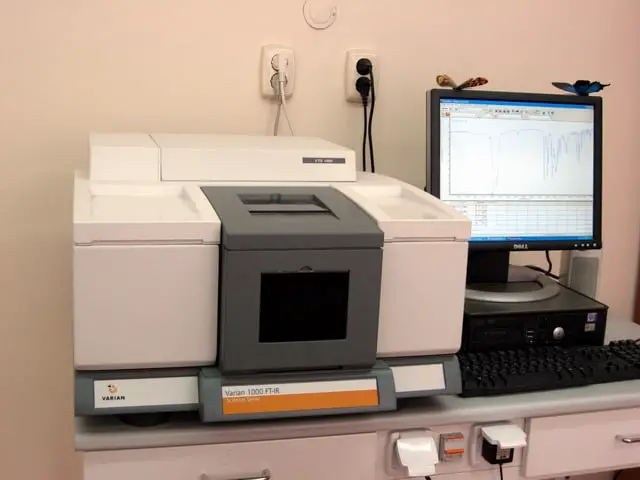KBr Pellet Preparation and Precautions:
Generally, Identification by Infrared spectroscopy is a test where the pellet needs to prepare for scanning. A good pellet preparation can give good results. Here some major tips for KBr pellet preparation and precautions.
KBr Pellet Preparation:
- The powder sample and KBr must be crushed to reduce the particle size.
- Add the required amount of KBr into an agate mortar and grind until crystallites can no longer be seen.
- Take the required amount of powder sample and mixed with KBr powder subsequently grind the mixture until the sample is well dispersed and the mixture has the consistency of fine particles.
- Assemble the die, with the lower pellet polished faceup. Transfer the grind mixture into the cylinder bore so that it is evenly distributed across the polished face of the lower pellet. Gently insert the plunger and lightly swiveling can often achieve a flat, even surface.
- Place the die assembly into a hydraulic press, between the ram and the piston. Ensure that the dye is firmly held in the press and increase the pressure as per requirement.
- Slowly release the pressure.
- Dismantle the die, and transfer the KBr disc to a spectrometer disc holder.
- Check that the disk is translucent and the sample is homogeneously distributed in the disc.
- Mount the disk holder in the spectrometer and scan the sample.
Precaution while IR Pellet making:
- The powder sample and KBr must be crushed to reduce the particle size. Otherwise, large particles scatter the infrared beam and cause a sloping baseline of the spectrum.
- Do not crush the potassium bromide to too finely powder as reduce particle size or fine powder of potassium bromide gain moisture from the environment due to its hygroscopic nature and forms the bands in certain IR region.
- Avoid touching the faces of the disk.
- The spectrum quality is affected by the quality of the disk. The flatness of the baseline is dependant on the particle size and dispersion of the sample in the KBr powder. Check the disk and spectrum for the following faults:
i. If the disk breaks on removal from the die, the disk indicates that the disk is too thin caused by too little powder, or too much pressure for too long. Remedy for this effect by increasing the sample load. Also, check that the correct pressure is applied.
ii. If the disk is not transparent, this can be due to:
a. Uneven distribution of powder in a die
b. Too much sample
c. Too much KBr powder.
d. Poorly dispersed sample
e. Water in disk
f. Pressed at too low pressure or for a too-short time.
5. A good KBr pellet is thin and transparent.
6. Opaque pellets give poor spectra, because little infrared beam passes through them.
7. White spots in a pellet indicate that the powder is not ground well enough, or is not dispersed properly in the pellets.
I tried to cover all aspects of KBr pellet preparation and precautions for identification by Infrared spectroscopy.
Also Read:
IR Spectroscopy principle and application
The important difference between Dissolution and Disintegration
For Interview Preparation Refer: Interview
For interview preparation refer
YT channel: Pharmabeej
